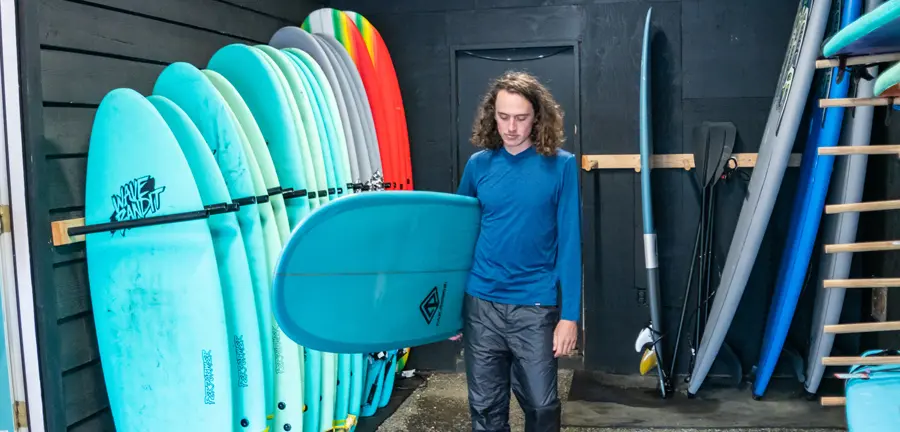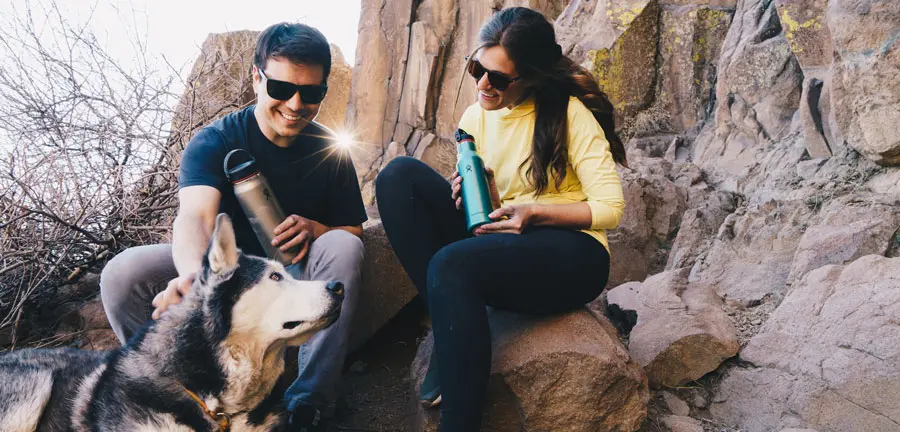An Introduction to the Compass
Compass fundamentals are imperative in any backcountry endeavor. Silly as it sounds, accelerated compass competence begins with a rhyme.
Keep Red in the Shed and follow Fred.
What does this mean?
Here is a compass:

Part A is your Direction of Travel Arrow. This is your new best friend, his name is Fred.
Part B is a pole-seeking magnetic needle that aligns on a north-south axis. The red side points North. For the sake of our rhyme: this is Fred’s dog, his name is Red.
Note: Red points to Magnetic North, which is different from True (geographic) North. Declination, the difference between Magnetic and True, is shown in the corner of all maps to allow you to compensate.
Reconciling the spread between the two can be done at least three ways; newer maps are more accurate.
1) Purchase a compass with adjustable declination correction and use magnetic north as if it were geographic north.
2) Either add (if your declination is to the west of true north) or subtract (if your declination is to the east of true north).
3) Draw declination lines on your map ahead of time and use those to orient your map in the field.
Part C is the orienting arrow—for our rhyme, the shed where Fred keeps Red.
Point Fred in the direction you want to go, and he will take you there. But before he does, you must put Red in the shed and keep him there as you walk. As long as Red stays in the shed, Fred guides you in a straight line; hold the compass at your belly, with Fred point directly away from your naval.
Again, keep Red in the shed and follow Fred!
With basics now learned, apply this to real life scenarios.

Using straight lines, in combination with natural “handrails” and “funnels,” is the best way to find your way quickly and efficiently. Handrails and funnels are natural, easy-to-follow guides (such as cliffs, streams, shores, washes).
Orienting your map is a crucial step. Compensate for declination, then line up your compass with the map’s compass rose to spot your current location along with potential destinations.
After your map is properly oriented, you can find a bearing (compass direction to follow).
Line up the straight edge of your compass between the point of your current location and the point you want to reach. Twist the dial (PART D) until the shed, or orienting arrow, is once again in line with the magnetic needle, red. The number shown where the base of Fred, your direction of travel arrow, meets the dial is your bearing.
A common mistake here is being 180˚ off; make sure the N on your compass and N on your map are in tune with each other.
Though you should always carry a map, this technique, called “bee-lining,” can also be used from a vantage point (the top of a hill, tree, cliff—anywhere you can see a long distance). Point Fred where you want to go and calibrate bearing the same way.

Always keep these 5 essential questions in mind:
1. Is my map oriented?
2. Where am I on the map?
3. Where am I going?
4. What will I see along the way?
Multiple baby steps are preferable to one giant leap.
5. What will I see if I go too far?
This doesn’t just mean too far past your destination. This means too far to the right or left as well.
Once you’ve got the basics, use these books to master the rest:
Wilderness Navigation
FalconGuides Trailside Navigation: Map & Compass
Practice these skills in the front country – even your neighborhood – before you enter high-stakes backcountry scenarios.
Related Articles

















